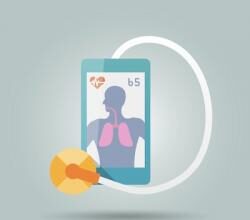Cardiac arrest kills nearly 300,000 people per year in the U.S. Of these victims, more than half die within two hours, sometimes long before ever arriving at a hospital – and survival rates for cardiac arrest patients vary widely by region. The high incidence of cardiac arrest deaths in the U.S. has sparked a new focus on improving the quality of care patients receive after they call 911.
Cardiac arrest kills nearly 300,000 people per year in the U.S. Of these victims, more than half die within two hours, sometimes long before ever arriving at a hospital – and survival rates for cardiac arrest patients vary widely by region. The high incidence of cardiac arrest deaths in the U.S. has sparked a new focus on improving the quality of care patients receive after they call 911.
Emergency medical systems and ambulance companies are leading the charge in improved emergency care. Increasingly, communities are training 911 operators to instruct bystanders by telephone on how properly administer CPR, which has been shown to vastly increase a patient’s chance of survival. In addition, some ambulances are being equipped with digital transmission systems used to send electrocardiograms to hospitals while the patient is en route. Unfortunately, these advancements and innovations can be difficult to introduce, and are not standard practices throughout the U.S. While Emergency responders must meet certain minimum regulatory standards, decisions to equip vehicles with the latest advanced telemedicine technologies and to train staff in the up-to-date procedures are mostly voluntary.
Advances are happening, however, and according to new data, survival rates are improving. Cambridge, Mass.-based Professional Ambulance and Oxygen Service Inc., known as Pro EMS, has been participating in a program at Emory University in Atlanta called the Cardiac Arrest Registry to Enhance Survival, or CARES. The program collects data from 911 call centers, EMS providers, and hospitals around the nation in order to help communities improve emergency care. Pro EMS cites CARES as having helped the ambulance company double its cardiac-arrest-survival rate in the last two years.
With the goal of training first-responders to be as effective as physicians when treating patients in the field, there is a growing movement to make sure emergency responders are as well-trained and well-equipped as possible. For the past decade, GlobalMed has developed advanced telemedicine technologies to help physicians improve patient care and reduce costs, including mobile medical carts.






